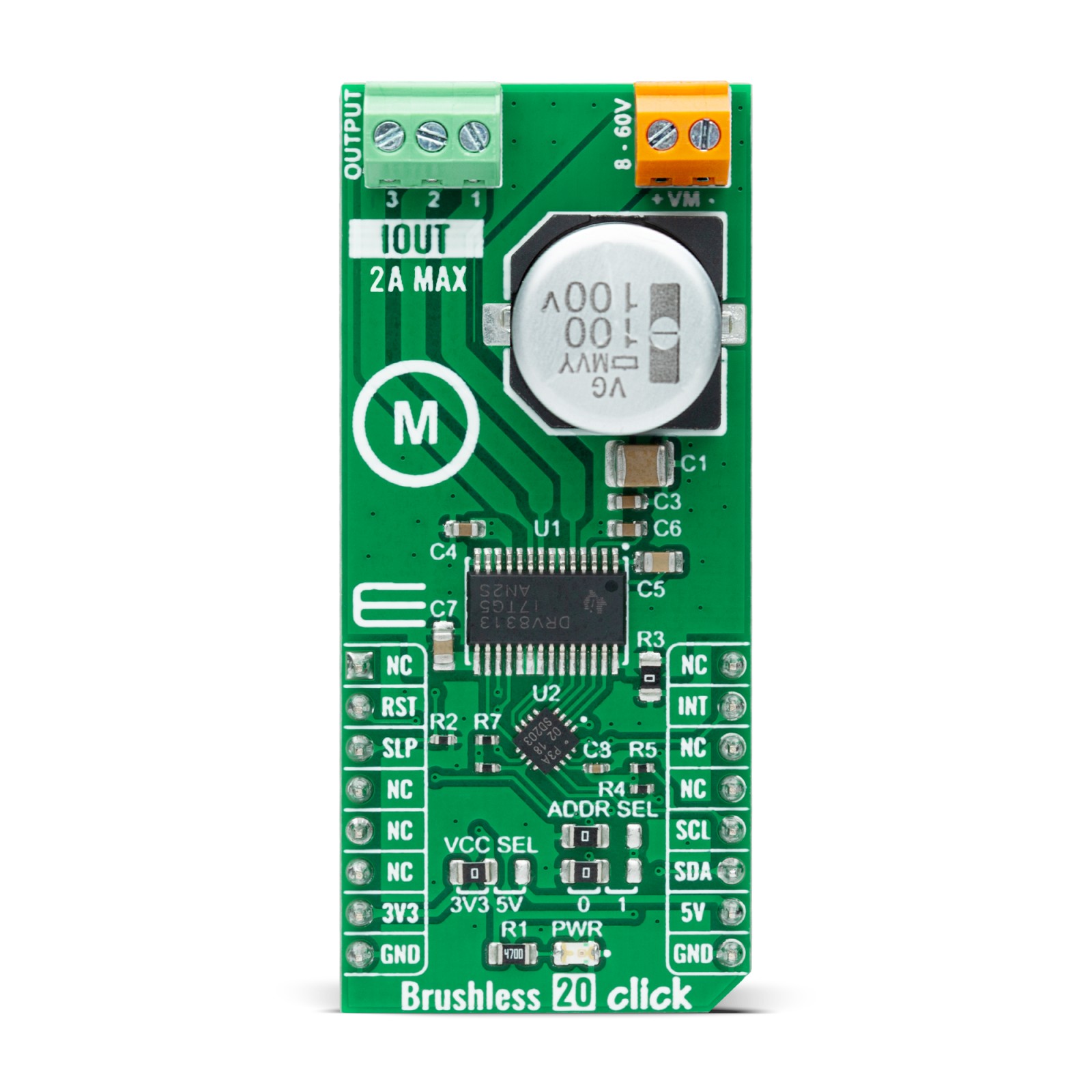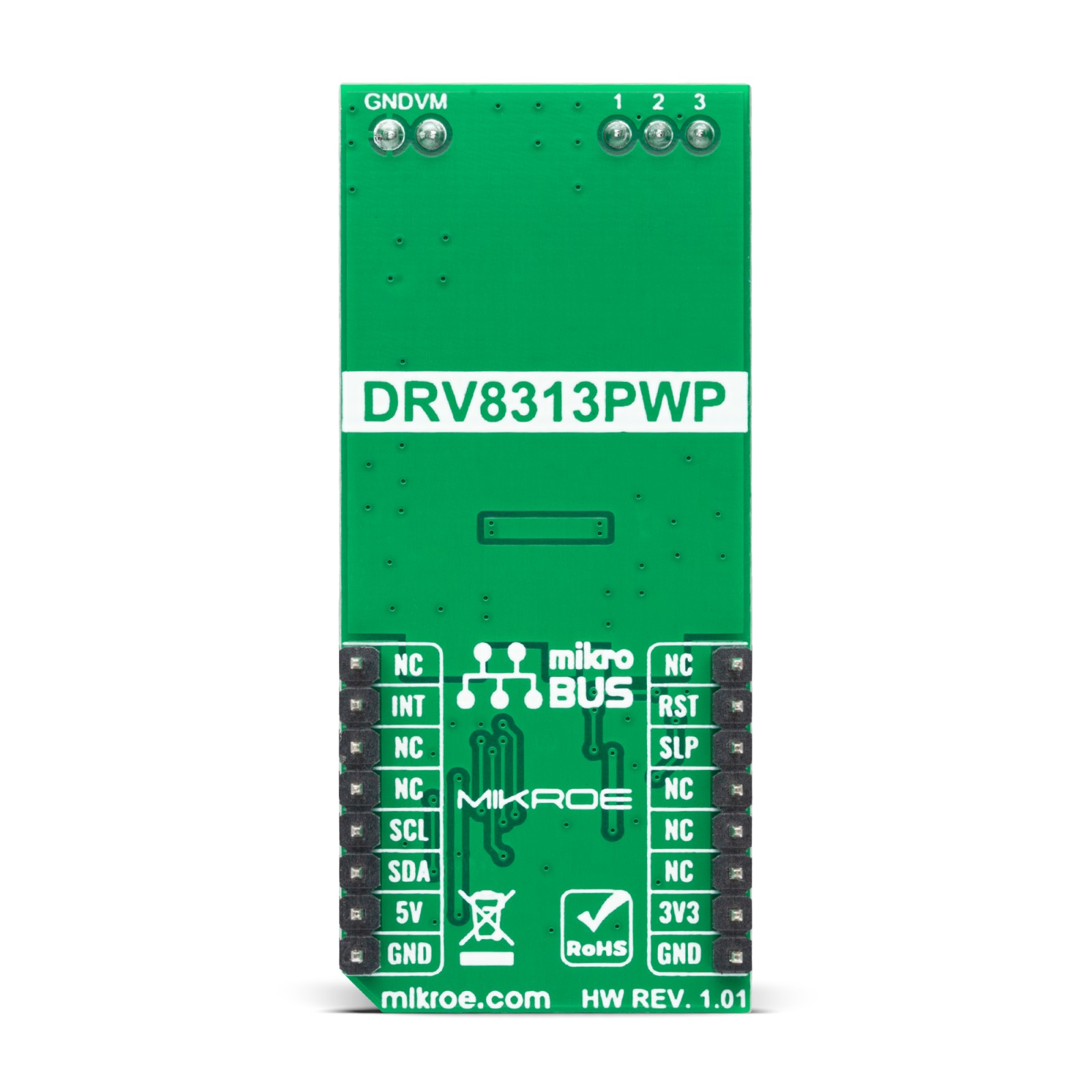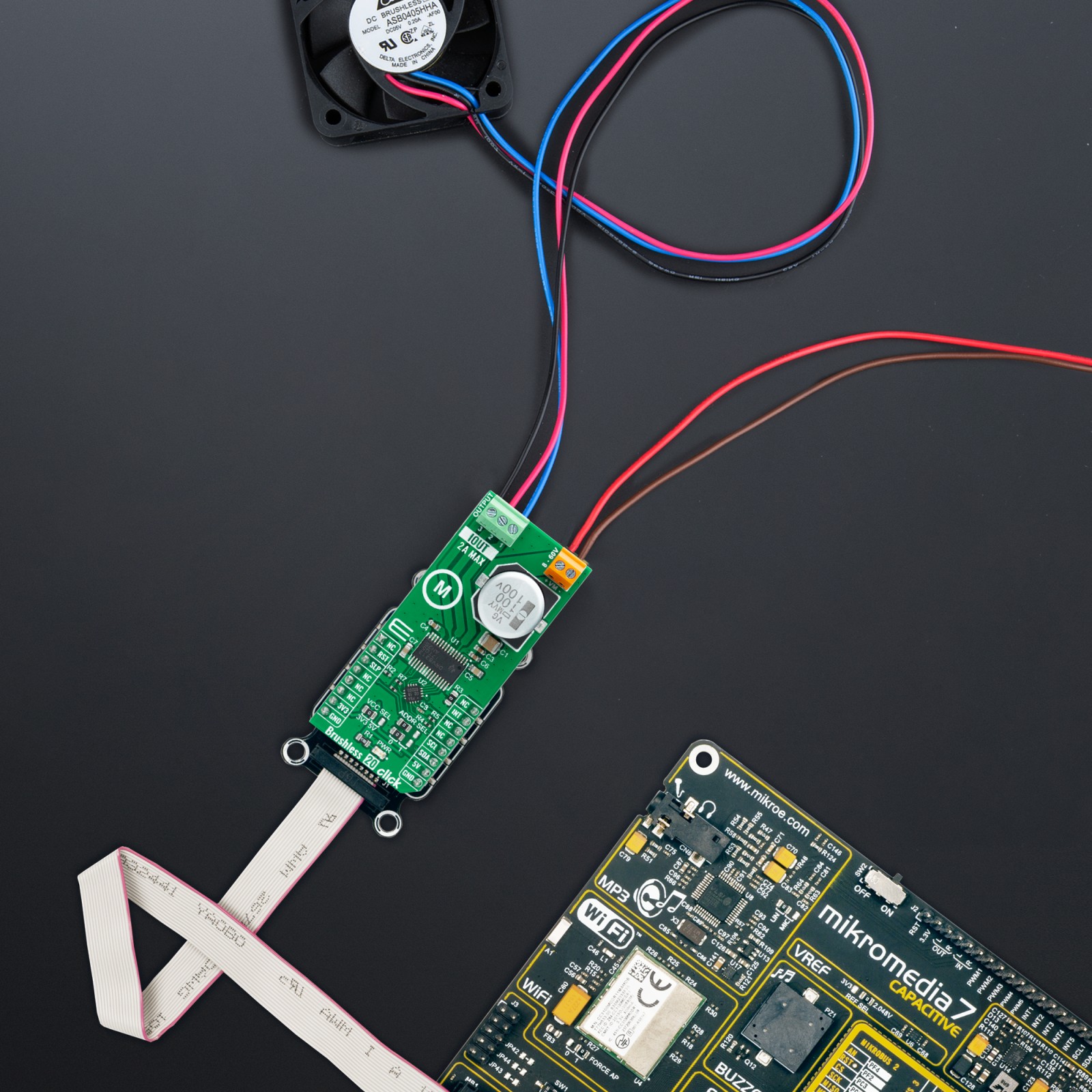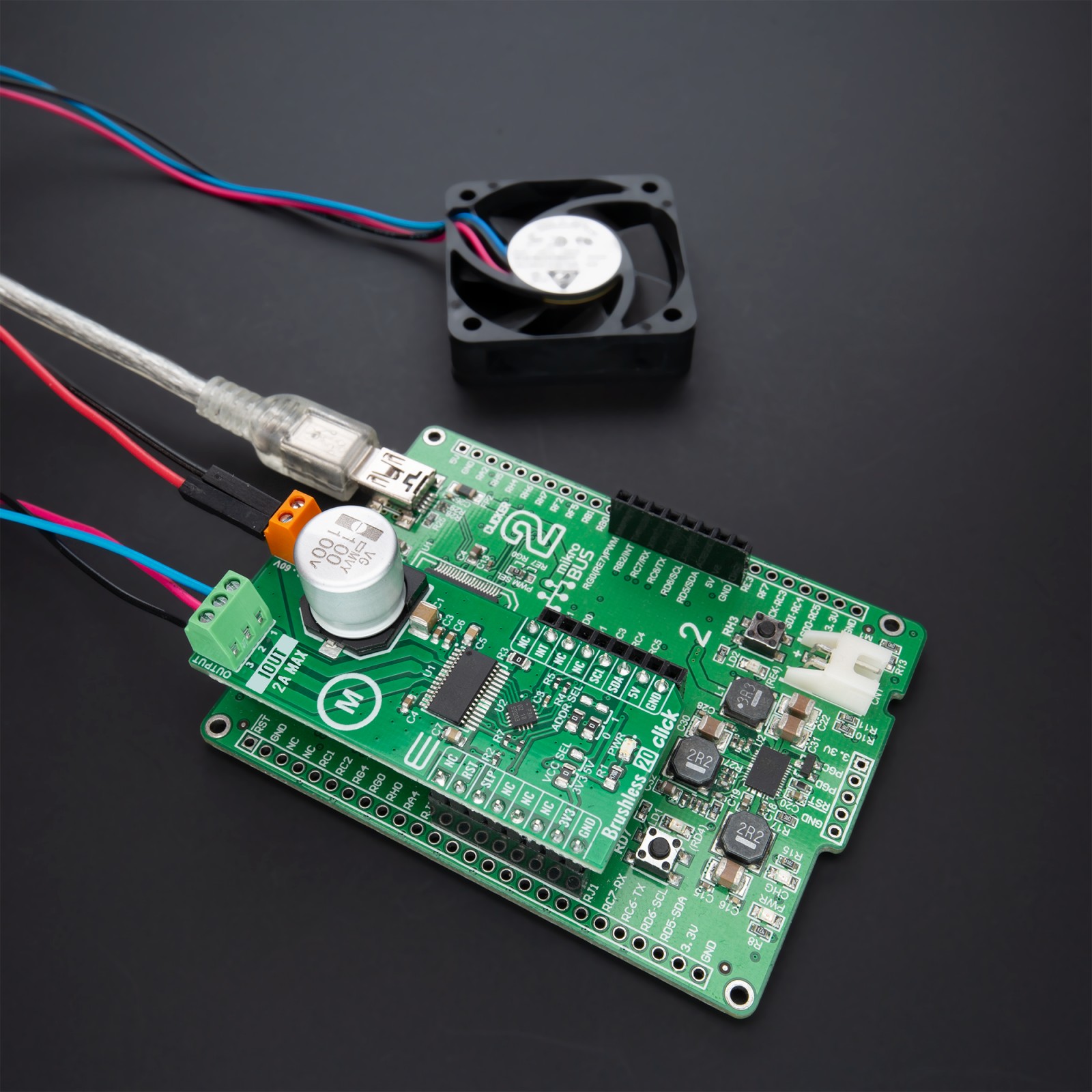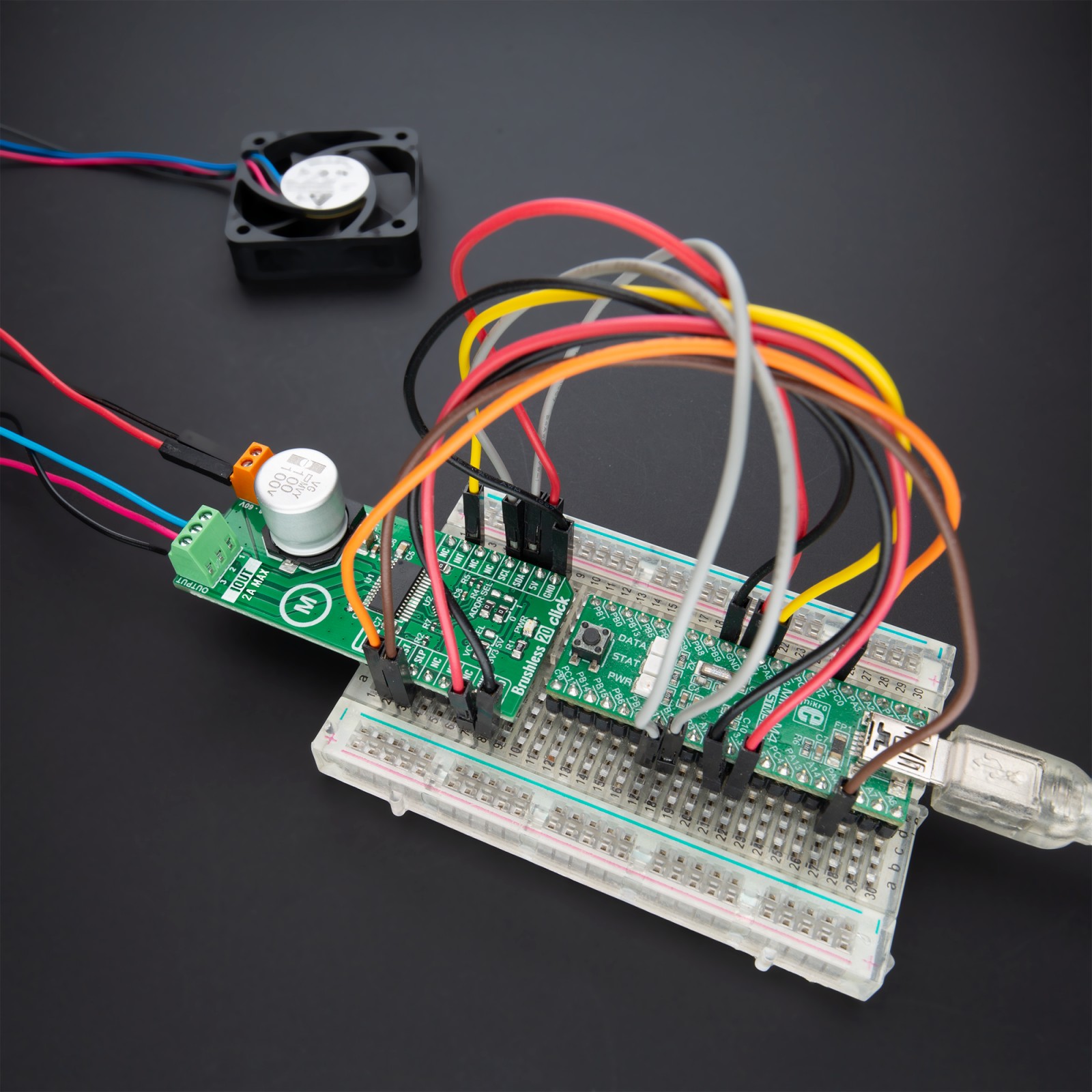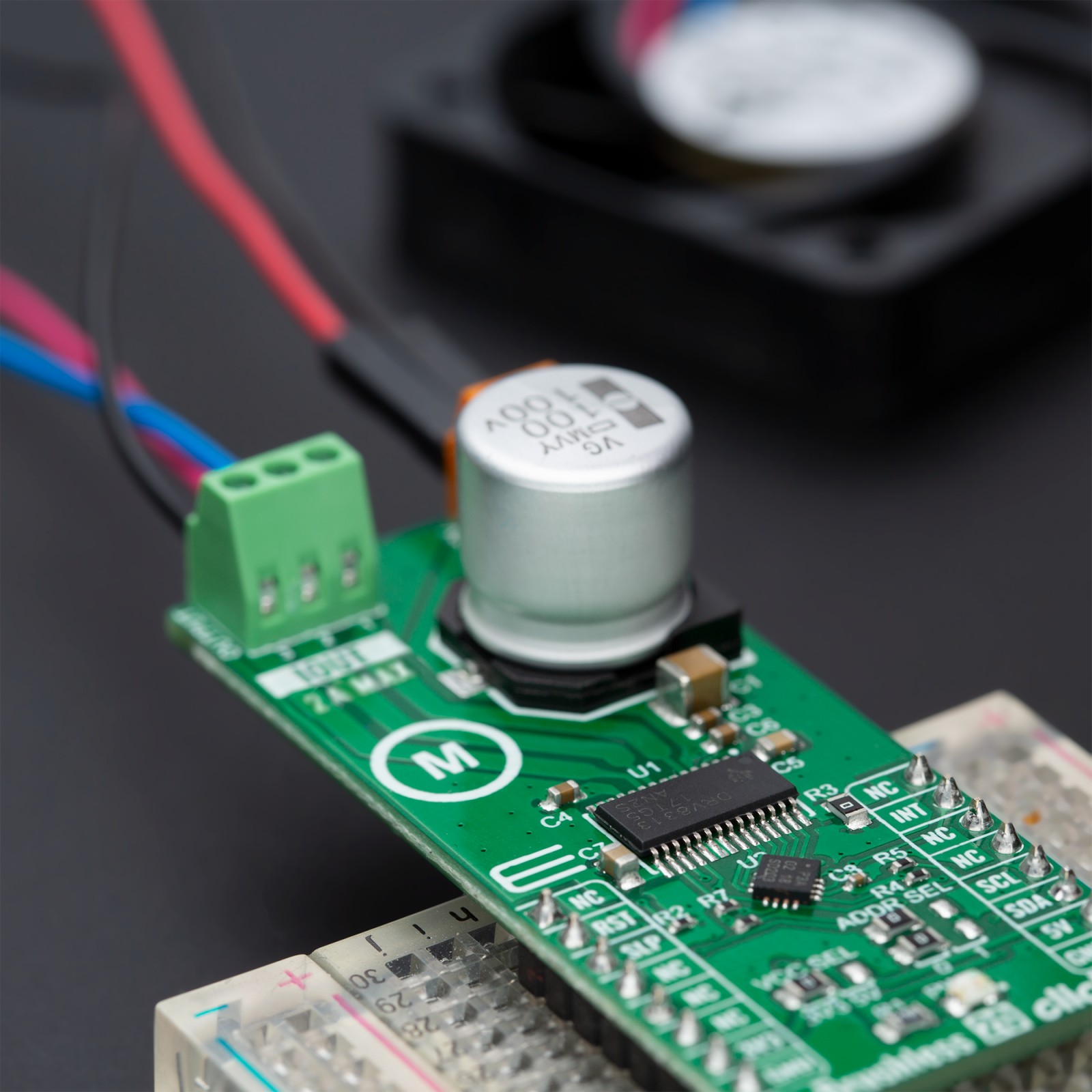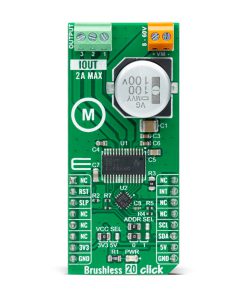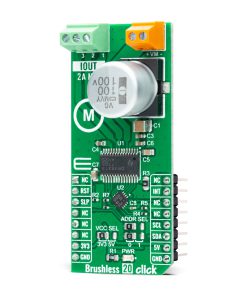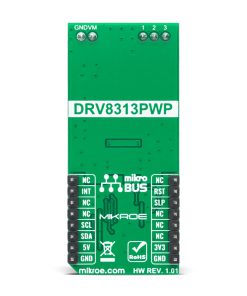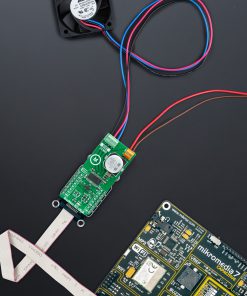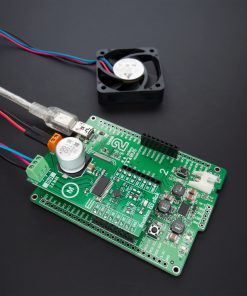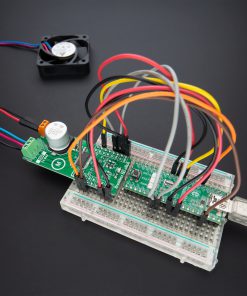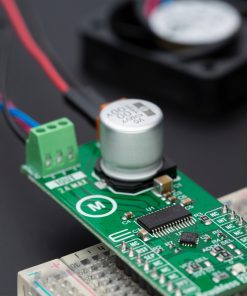Brushless 20 Click
R535.00 ex. VAT
Brushless 20 Click is a compact add-on board that controls brushless DC (BLDC) motors with any MCU. This board features the DRV8313, a fully integrated three-phase BLDC motor driver from Texas Instruments. It provides three individually controllable half-H-bridge drivers intended to drive a three-phase BLDC motor, solenoids, or other loads. Each output driver channel consists of N-channel power MOSFETs configured in a 1/2-H-bridge configuration. Besides, it has a wide operating voltage range from 8V to 60V, alongside several built-in protection circuits such as undervoltage, charge pump faults, overcurrent, and overtemperature. This Click board™ makes the perfect solution for driving three-phase brushless DC motors up to 2A output current rating.
Brushless 20 Click is supported by a mikroSDK compliant library, which includes functions that simplify software development. This Click board™ comes as a fully tested product, ready to be used on a system equipped with the mikroBUS™ socket.
Stock: Lead-time applicable.
| 5+ | R508.25 |
| 10+ | R481.50 |
| 15+ | R454.75 |
| 20+ | R437.63 |

